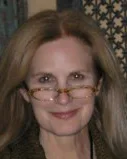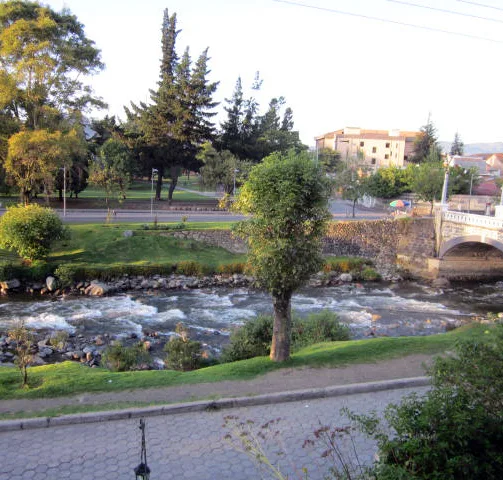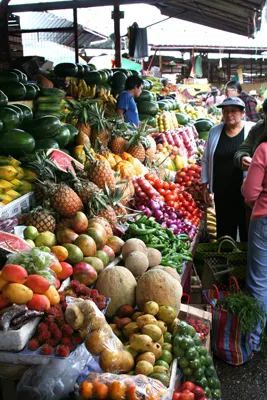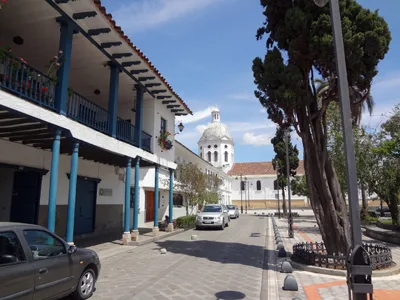What I like about Cuenca: A visitor looks at the city 20 years ago and today, and reflects on its pleasures, conveniences and people
By Wendy Jane Carrel
Cuenca, aside from being a UNESCO Heritage Site with beautiful colonial buildings and a unique history, offers unexpected and pleasant surprises if you’ve lived here a while.
What you’ve probably read or know is that this is a city of 600,000 (including urban parishes) at an elevation of 8,400 feet, nestled in a valley surrounded by the Andes. Its location is almost at the geographic center of the country, making it an ea sy starting point for exploring all the provinces. The panoramas and vegetation are eye candy – green pepper trees swaying in the breeze, jacarandas, Tipu Tipuanas (aka the Pride of Bolivia) brimming with yellow flowers, roses of every shade – fragrant and blooming all year. Four rivers pass through the city, with grassy knolls on both sides for miles, inviting you to lounge and fall asleep under the trees to the sounds of flowing water. Bridges and walkways are mostly of old stone. There are a variety of colorful birds.
sy starting point for exploring all the provinces. The panoramas and vegetation are eye candy – green pepper trees swaying in the breeze, jacarandas, Tipu Tipuanas (aka the Pride of Bolivia) brimming with yellow flowers, roses of every shade – fragrant and blooming all year. Four rivers pass through the city, with grassy knolls on both sides for miles, inviting you to lounge and fall asleep under the trees to the sounds of flowing water. Bridges and walkways are mostly of old stone. There are a variety of colorful birds.
I first visited Cuenca 20 years ago when I was location scouting for a movie.
On that visit, the hotel was the Crespo; it was one of only a handful. Perched over the Tomebamba river, it offered great views to the mountains above the super-sleepy city. There were hardly any cars. My trip from Quito to Cuenca with a driver and guide was more than 12 hours on bumpy, unpaved roads. The greenness and the terrain on that long trip reminded me of previous drives in Switzerland.
The Cuenca of today has morphed into a thriving city with busy streets and more than 100 hotels and hostels. All roads leading to it are smooth, paved highways. A tram system, to rival those of European cities, is being built from the new airport on the east, to “Gringolandia,” near Avenida de las Americas in the west.
One convenience I especially appreciate is the ease of flying in and out of the new Cuenca airport; it’s painless and only minutes from where I live. I’ve flown to Esmeraldas, Manta and Quito, and to Guayaquil as a departure point for California, Mexico, Panama, or other parts of South America. I like the freedom I have to take two to three day van trips to discover remote places, that my hotel bills are usually less than $20 a night for a private room and breakfast, and that I can get back to Cuenca quickly.
I also like a lot of other things.
I live in the El Vergel area, south of the Tomebamba River, a 10 to15 minute walk to El Centro. I lucked out with an affordable living arrangement. I rent a room from a missionary nurse (also former Peace Corps) from Oklahoma, an adventurous gal who loves to sing. We live in a new building with lots of light and two plant-filled patios. I like this south side of town mucho – it is warmer for me than living on the chic west side near the Cajas (a part of the Andes that has altitudes up to 15,000 feet). The sidewalks are often wider and newer than in other areas, and there are more traffic lights. I like the infinite number of banks, boutiques, small restaurants, DVD stores, the DHL office, the movie theaters, the chain grocery store, the small mall, and the money changers a block away.
I like the uniforms of office workers and the fact that Cuencanos dress respectfully – tailored suits and dresses, polished leather shoes, short, smart haircuts. Even though I believe in choice, it’s still nice to see people who put care into their appearance.
There are a lot of Cuencanos I’ve come to rely on: my gracious hair dresser Lucia who donates one day a month to cut the hair of abandoned seniors at a home outside the city; my charming and meticulous dentist Cristina; Ivan the engineer who helps me with photos and my phone at an El Centro store; Ana Lucia, the supermarket manager, who always greets me and follows with great interest what I am working on; Juanito, the always hospitable owner of an East Indian style store; Maria Fernanda, my bright and cheerful banker; my expert seamstress Sonia; the “transito” public safety guys and gals on their bikes; Freddy, with the welcoming smile at a café I frequent; and the Santa Lucia fellows who know exactly what to serve me as I write in a nook in the hotel bar, my secret hideaway.
And, then, the miraculous nuns. I adore Sor. Patricia, an 87-year-old who runs a home for 48 low-income seniors, and the Siervas de Maria, nurse nuns who sit hospice from 5 p.m. to 7 a.m. for whomever needs them. These people and others are city treasures.
There are also unique North Americans and Europeans here: Joe and Joseph who host marvelous nights of international food and fun at their secret garden; the young and talented Gavin and Karen who host locals and expats at their continental European restaurant; former Peace Corps volunteers Craig and Lucy who offer great American breakfasts and indescribable homemade pies; Tony (and his wife Katie), the super smart computer exec and tech from the Midwest; James the adventure guide who is also a certified home inspector; Ken who runs the organic tienda; the editors of the on-line newsletters that let us know what is happening; the lovely folks from church, and many more.
The community of Norte Americanos (approximately 10,000 between Cuenca and Loja), represent diverse educations and unusual life experiences. If anything happens to you, my experience is that they show up. One person will put the word out on Facebook, Gringo Post, or Gringo Tree and voila, you have an extended family. The local 911 responders show up as well. I find it especially moving that people you’ve never met before would be so concerned about you, especially the legion of retired physicians, nurses, physical therapists, social workers, etc., enough talent to form a clinic or hospital.
Now about the weather. I’m a desert girl so it would not be honest if I said I love the weather, but I am an exception. I’m from a place where it rains two weeks out of the year. I do, however, understand how important rain is. I can share that 95% of people I meet are thrilled with the weather since they come from the freezing climes of Canada or humid climes of southern states, Texas included; for them, being in Cuenca is a gift.
And because of this rain, every province in Ecuador can feed itself even though some fruit is imported from Chile and Peru. How many provinces and counties in North America can say they are as self-sustaining? And who else can say they have the best water in South America, or that they have water at all? As it is written, only Cuenca.
About the food. Organic markets, organic produce at grocery stores. gluten-free options at some bakeries and restaurants, as well as with a private vendor. How about organic local coffee or organic local chocolate, considered some of the best in the world, as in award-winning.
If that’s not enough for your senses, there are free concerts with performers and orchestras from around the world, every weekend, usually in a splendid cathedral with excellent acoustics. Galleries? Yes, there’s an art scene. Activities? Spanish classes, raw food classes, a knitting group, a fly-fishing club, a dog rescue group, a golf group, a wines of Ecuador collective, and more. Volunteering? The possibilities are infinite.
The American movie I was scouting was never produced, but I have been able to experience the great natural wonders of this land. The Crespo is still offering great views from its dining room as well as French toast. In the meantime, a few more places have come along that also boast tasty French toast.
One thing has stayed the same since my first visit: the time. At the equator there is no daylight savings time, so I never have to lose that extra hour of sleep in the fall.
Wendy Jane Carrel, M.A., has been based in Cuenca while researching health care options in Chile, Ecuador, and Mexico for the last two and a half years. She has lived or worked on four continents in over 40 countries.

























